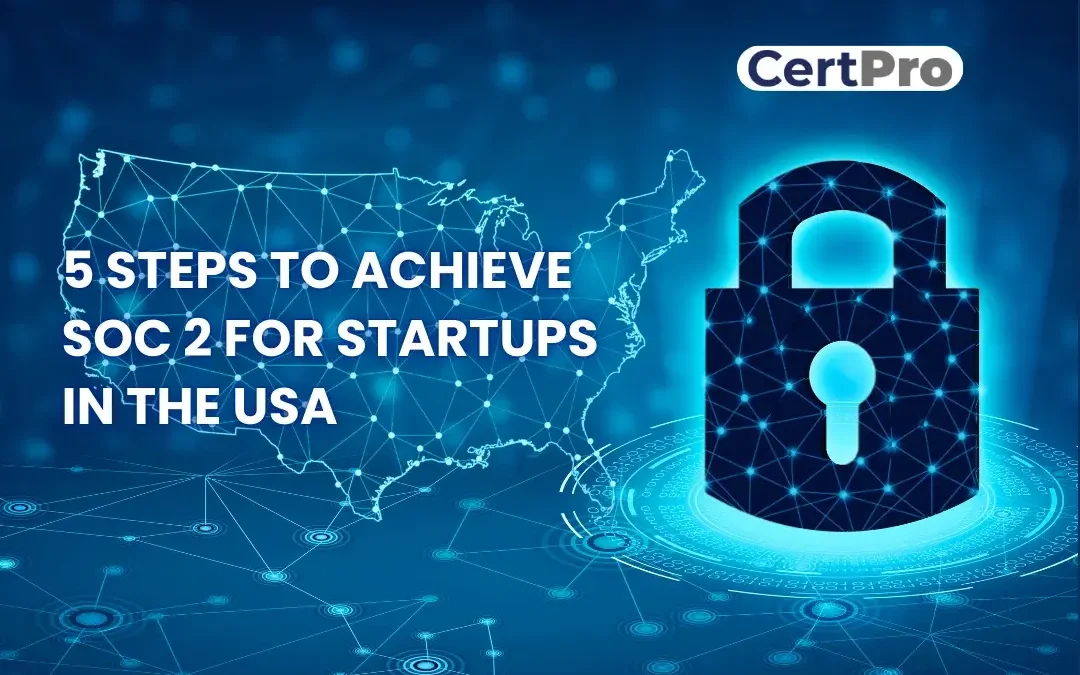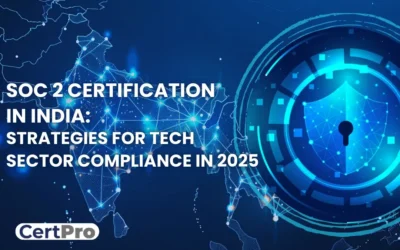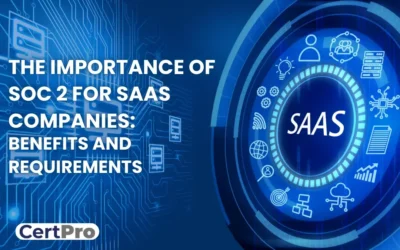SOC 2 for startups is gradually gaining popularity due to increasing incidents of data breaches. Previously, security was considered an afterthought for startups, while growth was the prime concern. Hence, startups focus on generating revenues instead of taking proactive measures in compliance practice. SOC 2 compliance tends to be more popular among large companies. However, the scenario has changed in today’s business world. According to an IBM report, the average cost of data breaches increased to $4.35 million in 2022. Therefore, the repercussions of security incidents mandate SOC 2 compliance for startups in the USA.
Furthermore, Austin and Seattle’s dynamic and growing business prospects indicate that SOC 2 for startups is essential for business development. The faster-growing US economy demands compliance, ensuring your organization performs business ethically. On the other hand, SOC 2 helps startups with business collaboration and fundraising activities.
This article will discuss five steps to achieving SOC 2 for startups and identify its importance for startups in the USA. Read the article to learn about the simple process of SOC 2 for your startup business.
SOC 2 TYPE I OR TYPE II REPORT- WHICH IS REQUIRED FOR YOUR STARTUP?
SOC 2 for startups is a voluntary compliance that offers competitive advantages. The process ensures that the organization implements adequate internal controls, follows regular risk assessments, and creates a strong security posture. If your startup processes, stores, or transmits customer data, it requires a SOC 2 audit. In general, data centers, SaaS, MSPs, FinTech companies, healthcare organizations, and payment processors require SOC 2 compliance. Why is SOC 2 important for your startup business? Modern customers sometimes only take services from startups with a proper security posture. The emerging risk of cyberattacks makes them conscious about their data security.
Thus, SOC 2 Type I evaluates the cybersecurity controls of your startups at a single point in time. The primary objective of the audit is to ensure that internal controls are put in place to secure the customer’s data. The audit process reviews whether your startup can fulfill the required Trust Service Criteria (TSC). If you have a limited budget and capabilities, you can opt for a Type I audit, which takes less time and effort. In comparison, SOC 2 Type II audit reviews the efficacy of controls over a period of time. Basically, it is a thorough audit process that requires continuous monitoring and modifications. The audit report signifies that your startup follows all the data security measures to protect the client’s data. However, it is an expensive and complicated process that demands expert intervention.

5 STEPS FOR STARTUPS IN THE USA TO ACHIEVE SOC 2 COMPLIANCE
SOC 2 for startups can be difficult to achieve. Here, we outline five simple steps to help you meet your startup’s SOC 2 certification requirements.
1. Implement Trust Services Criteria:
The five TSCs assess organizational controls at an operating unit level. In the case of SOC 2 for startups, the security criteria are the only mandatory TSC, but you incorporate a few more measures to strengthen security posture. Further, security is the minimum requirement for SOC 2 audit. Your startup business needs to showcase that you are adequately protected against data destruction, software misuse, or other kinds of risk that threaten your data. You can implement a firewall, email encryption, threat detection, or other security controls in this regard. Privacy is another TSC that ensures the safety of your clients’ personal information. Similarly, confidentiality confirms that your startup business has policies that prevent cyberattacks. To achieve this criterion, vigorous employee training is an essential requirement.
Additionally, processing integrity ensures the data monitoring policies are working as intended. Lastly, data availability validates your startup’s response plan to combat the disaster.
2. Develop Policies and Controls:
Establish clear, documented policies for your security program. In addition, your policies must be clear and concise to justify your business’s goals. Implementing SOC 2 for startups requires policies around data retention and disposal, incident response, data access, and security training. Therefore, it offers a complete idea about the types of data your company will store, how to manage a crisis period, and how to avoid potential risks. It allows your employees to follow the process and maintain the compliance journey. SOC 2 compliance is all about documenting the controls and ensuring that employees know their responsibilities in carrying out the controls. Thus, policies provide the employees with responsibilities and allow designated control owners to mitigate the risks.
3. Initial Readiness Assessment:
Once you have implemented policies, processes, and controls to reduce risks, you can conduct a readiness assessment. A readiness test is like a practice version of the SOC 2 audit. While you can check your readiness, getting an expert is often better. In this regard, CertPro can help you in the readiness assessment process because experts have the proper knowledge and an outside perspective. Thus, the auditor reviews all your systems, methods, controls, and documents during the assessment. In the end, they will mention the discrepancy observed in the process. The auditors will also provide suggestions for fixing the problems. The initial readiness assessment helps you identify areas for improvement and gives you an idea about the flaws in the process.
4. Gap Analysis and Remediation:
After that, you will perform a gap analysis to discover the process’s flaws. You need to find out the potential risks in your startup. This includes assets, infrastructure, software, employees, methods, and data. These risks impact your organization’s ability to meet the desired goals. As part of the assessment, you will find out the potential threats of your implemented policies. You will also want to know what effects it has on your business. Thus, you may rate the risks based on their intensity and impact. This ranking helps you respond to each risk in the right way. Thereafter, the controls are modified and implemented to eliminate the risks. This may mean creating or updating a plan to keep your business running. You may also need technological support to put access controls and other security in place. This will lower the risk to an acceptable level.
5. Find a SOC 2 Auditor:
The ultimate step is to find an auditor for your final SOC 2 report. Therefore, any CPA firm can conduct your audit process. However, selecting a reputed and knowledgeable firm in information security and experience can help you. Further, the auditor’s fees are important in the selection process. Large CPA firms demand excessive fees compared to medium-scale firms. Therefore, choose wisely, as unnecessary expenses can suffocate your startup’s future. Select a reputed, supportive, and affordable firm for guidance and help. SOC 2 compliance is a complicated, expensive process that might positively impact your business and reputation.
IMPORTANCE OF SOC 2 FOR STARTUPS
Achieving SOC 2 for startups requires immense planning, effort, and financial affluence. However, it is essential for the USA market, especially the growing hubs like Austin and Seattle. Here we mention some of the advantages of SOC 2 certification in Seattle and Austin:
Protects Your Startup:
It protects your startup from the risk of cyberattacks and data breach-related penalties. In the competitive markets of Seattle and Austin, SOC 2 compliance allows you to perform business ethically and convince customers about your data security practice. Thus, it attacks more customers and eventually increases business opportunities. For startups, a single breach can be enough to lose the customer’s trust and suffocate the business’s existence.
Distinguishes You from the Competitors:
SOC 2 for startups indicates your dedication to upholding your presence in the competitive market. Consequently, Austin and Seattle’s contemporary customers prioritize data security before developing business relationships. Thus, you can get extra mileage with your compliance practice and beat the competitors. Your dedication towards data security enables your opportunities and gradually improves your market presence.
Attracts Customers:
Startup businesses require market recognition through customer acquisition. SOC 2 for startups enables attracting customers in the aggressive business market. You will also gain clients’ confidence much faster. Higher levels of trust result in more long-term customers. This raises revenue generation and expands opportunities while lowering marketing expenses.
Improves Your Services:
SOC 2 compliance enables you to improve security while also increasing organizational efficiency. You will have more time and resources to invest in your products and services, resulting in higher quality and client satisfaction. It also pushes businesses to implement security protocols established in the company culture.
Secure Your Startups in the Long Run:
Considering the expenses and efforts involved, startups are avoiding SOC 2 compliance. This can create difficulties in their long-term business. On the other hand, implementing SOC 2 for startups reduces your company’s risks and expenses for the compliance implementation process. Similarly, it offers competitive advantages and sustainability in the market. In addition, it helps businesses implement other compliances.
HOW TO MAINTAIN SOC 2 FOR STARTUPS
It is crucial to remember that SOC 2 compliance preparation is a continuous process. To receive a SOC 2 Type II report, your organization must undergo a thorough evaluation and must be re-evaluated annually to preserve its SOC 2 certification.
At the same time, the security protocol always comes up with new and enhanced best practices. Every time you implement a new security measure, you must record it and provide evidence. So, running over a SOC 2 checklist numerous times a year is a good idea to ensure that your policies and practices are up to date. Hence, schedule a biannual internal audit to assist you in keeping on track.
ACHIEVE COMPLIANCE WITH CERTPRO
SOC 2 for startups helps build and enforce solid controls and processes from the beginning. The diverse markets of Austin and Seattle demand SOC 2 compliance for continuing business growth. However, we recognize that startups avoid compliance due to financial constraints. Therefore, collaborating with an affordable and experienced auditing firm in this field can be a wise decision. Thus, startups from Austin and Seattle can consider CertPro as their SOC 2 consultants. We offer quality services at affordable prices throughout the USA. Hence, CertPro might be an excellent option for entrepreneurs who want to improve and streamline their security programs. In addition to making it simple, we offer customized services and speed up the audit process by sharing the audit details.
For more details and concise suggestions, visit our website, CertPro.com. We help our clients throughout their compliance journey and offer periodic audits to reduce the risks. Our efforts and guidance will help your startup achieve the SOC 2 report.
FAQ
How can startups achieve SOC 2 compliance?
Startups can achieve SOC 2 by implementing Trust Services Criteria, developing policies and controls, conducting a readiness assessment, performing a gap analysis, and working with a SOC 2 auditor.
Is SOC 2 mandatory for all startups?
No, SOC 2 is voluntary, but it’s crucial for startups that handle sensitive customer data and want to attract clients and build trust.
What is the difference between SOC 2 Type I and SOC 2 Type II?
SOC 2 Type I assesses a startup’s security controls at a specific point in time, while SOC 2 Type II evaluates the operational effectiveness of those controls over a period (usually 6-12 months). Type I is less expensive and quicker, while Type II is more thorough but also costlier.
Why is SOC 2 important for startups in the USA?
SOC 2 helps startups protect against cyberattacks, builds customer trust, and differentiates them from competitors. In growing markets like Austin and Seattle, SOC 2 is essential for attracting customers and improving business opportunities while ensuring long-term sustainability.
How do I maintain SOC 2 compliance after achieving certification?
Maintaining SOC 2 requires continuous monitoring and annual re-evaluations. It’s essential to update your security measures regularly, conduct internal audits, and ensure compliance with evolving best practices.

About the Author
Anuja Patil
Anuja Patil, an Executive Team Lead at CertPro, excels in guiding her team to deliver premier information security solutions. With a strong background in ISO 27001, SOC2, GDPR, and various other compliance standards, she ensures that projects are managed efficiently and security frameworks are continually optimized.
HOW TO OVERCOME THE SOC 2 CHALLENGES IN FINTECH INDUSTRIES IN THE USA
Technological advancement is changing the complexity and requirements for regulatory compliance. Fintech companies are increasing their businesses in the modern era as we use technologies to accomplish our financial transactions. On the other hand, the banking and...
SOC 2 CERTIFICATION IN INDIA: STRATEGIES FOR TECH SECTOR COMPLIANCE IN 2025
The AICPA developed SOC 2 certification in India as a collection of guidelines to assist IT businesses in protecting client data. With the rapid growth of India's digital sector, safeguarding personal data is more crucial than ever. Businesses must demonstrate their...
THE IMPORTANCE OF SOC 2 FOR SAAS COMPANIES: BENEFITS AND REQUIREMENTS
SOC 2 is a data security standard developed by the American Institute of Certified Public Accountants (AICPA). The standard offers the desired level of privacy and security regarding customer information. The rule is not mandatory, but it has multiple benefits for...




